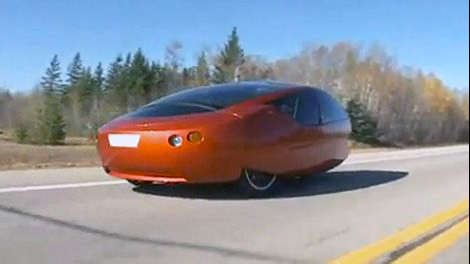The big news is that a documentary about the Urbee car (which took filmmaker, Doug Howe, 2.5 years to make) is being premiered tonight in Winnipeg.
I featured the Urbee in a couple of Sept. 28, 2011 postings titled, Manitoba’s Urbee, which described it and mentioned a 3-D printing process used for the car panels, and *an Interview with the Urbee car’s Jim Kor where I asked if nanotechnology enabled some of the refinements such as the 3-D printing process (it did), and more.
Sadly, I’m not getting to Winnipeg tonight but if you can, here’s more information about the premiere,
The public premiere of the URBEE DOCUMENTARY. This is the story of the building of the urban vehicle of the future. URBEE is the world’s greenest passenger car. And it’s being built right here in Winnipeg!
WHEN is this happening?
Tuesday August 28th doors open at 6:00 PM [rush seating]
6:30 Music by Bucky Driedger/Matt Schellenberg of the Liptonians
7:15 URBEE the documentary premiere
WHERE is it?
The Park Theatre 698 Osborne Street
HOW did they do it?
URBEE is designed and constructed by an elite group of Winnipeg engineers, industrial designers and environmental enthusiasts led by Jim Kor
WHY do we need URBEE?
It’s estimated there are 1 billion cars currently on the road across our planet. By 2050 there will be 2.5 billion. The rampant consumption of fossil fuels by these automobiles is an unsustainable drain on the world’s energy. And the resultant dumping of carbon into the atmosphere comes at a grave cost to the environment. Built right here in Manitoba, URBEE is the prototype for a 21st century approach to automotive design that redefines energy efficiency and minimizes impact on the environment.
Here’s an image of the Urbee on the road at Bird’s Hill Park near Winnipeg,
And here’s another angle on the Urbee,
You can see why the car has attracted so much interest here and internationally. Here’s news about the Urbee now that it’s back from Europe (from the Jan. 2012 WOW backgrounder document),
Urbee has just returned from Europe, and is now safely back in our shop on Erin Street. Work continues on the car. This winter [it’s not clear if they mean 2012 or 2013] we plan to drive Urbee during one of our worst Winnipeg snow storms, to demonstrate that Urbee can also be a great winter car!
Congratulations to the filmmaker, Doug Howe, and Jim Kors. I look forward to hearing more about the Urbee (or URBEE).
There will be a DVD of the documentary available soon. If you contact them via jkor@urbee.net, you will be placed on a waiting list.
* ‘and’ changed to ‘an’ Nov. 7, 2013

